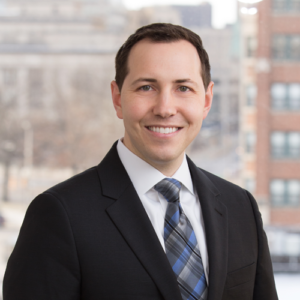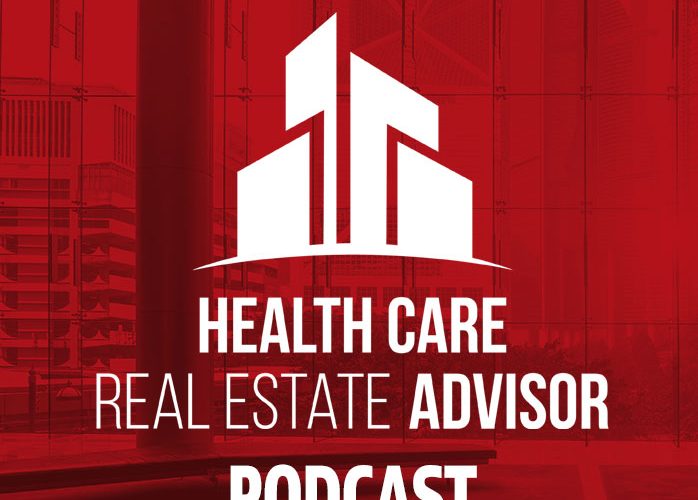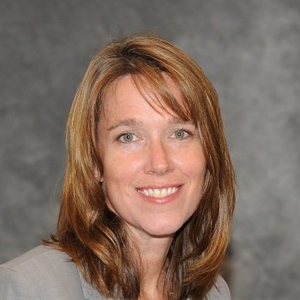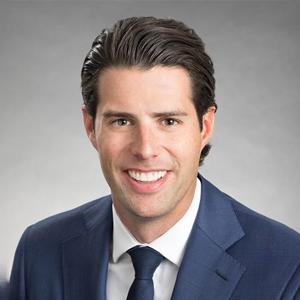Libby Park: Hello and welcome to the Healthcare Real Estate Advisor Podcast. I’m Libby Park, a healthcare real estate attorney with Hall Render. For today’s episode of the podcast we are going to listen in on a webinar that discusses health care real estate trans observed during the COVID-19 pandemic. I hope you enjoy the podcast and feel free to contact me at lpark@hallrender.com with any follow up questions you may have.
I like to thank everyone for turning into our webinar today to discuss healthcare real estate trans-observed during the COVID-19 pandemic. My name is Libby Park and I am an attorned with Hall Render. The largest healthcare focused law firm in the country and then based out of our Denver Colorado office. I work primarily with the firms reals estate service line and it’s my pleasure to be here with each of you over the course of the next hour for our discussion. I like to start of today by thanking all of our healthcare workers on the front line that are working to keep our community safe.
We appreciate the work you do each day. On the webinar today we are joined by distinguish panel of experts in the healthcare real estate field. John VanSanten, Lorie Damon, Perry Bacalis and Shawn Janus. Each of whom will introduce themselves to you in a moment. Our goal in hosting this webinar is to bring a group of professionals together to talk about best practices in industry trends affecting healthcare real estate during the current public health emergency. We will discuss topics including rent relief, fair market value, reopening considerations and what a post COVID-19 return to normalcy may look like. Our goal is to learn from one another and our panel and take the information back to our respective organization. And with that lets hear from our panelist. John could you please start out introductions and tell us about yourselves.
John VanSanten: Sure. Libby I’m happy to be a part of the panel. My name is John VanSanten. I’m a managing director [inaudible 00:02:11] as a financial consulting firm that has a number of service lines including investment banking, dispute consulting, management consulting and valuation, which I’m a part of. And valuation includes business valuation, machinery and equipments as well as real estate valuation. I’m based in our Chicago office although this firm actually has offices in 16 cities around the country as well as some international offices too. So I called the real estate valuation practice for stout and I focus my practice on healthcare real estate where I’ve been practicing for about 30 years and we do valuations in the healthcare space for a variety of purposes including stark. And as I kicked back compliance and other matters as well. Very happy to be part of a panel.
Libby Park: Thanks John. Lorie, can you please introduce yourself?
Lorie Damon: Sure. Thanks Libby. I’m Lorie Damon. I lead Cushman and Wakefield’s healthcare advisory practice. I have a team of roughly 300 healthcare real estate professionals who collectively manage 34 million square feet of medical office and ambulatory assets. We also provide advisory and transaction expertise for healthcare systems, physician practices and investor owners and developers.
Libby Park: Thanks for that Lorie. And Perry, can you please introduce yourself?
Perry Bacalis: Thanks Libby. My name is Perry Bacalis. Thanks again everybody for being on the panel of your time this morning. I’m honored to be on a panel with everyone. I am a healthcare real estate advisor, a broker here in Denver. Company I work with is called Carl Health Care Realty. I’ve been with Carl for about six years. When I joined Carl, there was four of us in Colorado. And now there are over a hundred men and women across the country representing real estate professionals. We’re a tenant buyer only firm. So it’s exciting to watch our company grow and to be helping people that help people.
Libby Park: Thank you Perry. And Shawn, please tell us about yourself.
Shawn Janus: Thanks Libby. I’d also like to make a note to thank all the health care workers. Any of you may be on the phone as well. So we do appreciate all your efforts. My name is Shawn Janus. I’m the national director of Healthcare for Colliers International. So I run our US healthcare practice seven of business for over 20 years on both the principal and advisory side. Colliers is a global organization in the real estate side full service. So we do brokerage, capital markets advisory, project management, et cetera. We actually have we pride ourselves on kind of taking national best practices, kind of the healthcare level and having local brokers and advisors deliver that at a local level. So we have a healthcare [inaudible 00:05:14] program, which are folks dedicated to the healthcare space in our specialists. And I’m looking forward to today’s discussion.
Libby Park: Thank you Shaw, and thanks everyone for those introductions and for telling us more about what you do each day. Now let’s jump into our first topic of rent relief. Landlords and tenants across the US are experiencing the financial ripple effect of the COVID-19 crisis, particularly as it relates to payment and collection of rent. Shawn, what types of rent relief structures are landlords and tenants asking for in order to deal with the pandemic?
Shawn Janus: It would be interesting. I think one of the unique things, and obviously I give him a nose out of the real estate asset classes the industrial space has fared better than most. I think healthcare is probably potentially best positioned after that currently. Just to give some perspective, it’s been a read the wall street journal today. You look at retail tenants and SL-green, one of the largest owners of space in New York city, their April rents were less than 40. They received less than 45% of their April rents. By contrast in surveys that we’ve been doing across healthcare owners across the country on the landlord side. On April rents 14 to 18% on average is either tenants who have sought rent relief or have come to some conclusions with their landlord relative to how that would be held in going forward.
Shawn Janus: I think most importantly, it’s important to communicate and openly early and honestly between landlords and tenants so that folks are aware of what’s going on. I will tell you, landlords typically want to see when tenants are coaching them for potential rent relief. They’ll want to make sure that the tenants have pursued the PPP applications with the federal government or the payroll protection plan. They’ll also typically want to see financials of those tenants as well. So they can make prudent decisions and try to keep them moving forward as well. In terms of specific structures, it’s interesting. I think hospital and health system owners typically have a standard policy is what we’ve seen relative to how they deal with tenants. A part of that is I’m sure folks on this call know we have the blanket waiver of the cert provisions, et cetera.
Shawn Janus: And even given that the uncertainty of what things will look like afterward had caused the hospitals and health systems to try to get to a situation where those treat each of those tenants in a similar manner. So again, a standard policy. A contrast that to the investor developers who are approaching it more on a case by case basis. And again, we’ll work with each particular tenant given their circumstances and try to work out what that relief might be. To specifically address kind of your question, Libby, in terms of what we’re seeing in the marketplace currently, I think on average it’s fair to say we’ll probably the two to three months rent relief rent before rural situation for most folks, how that is then dealt with from the landlord tenant perspective changes a bit in terms of how it might be structured.
Shawn Janus: We’ve seen it where those two three months may be paid back at the end of the calendar year or paid back over the last two to three months of the calendar year. We’ve also seen it where the rent deferral has been amortized over the balance of the lease term. So you’re capturing over that time. And we’re also seeing it whether it be amortized it over just this calendar year. So if you get two months of deferral, you would then take you through say June, you would end up resenting amortize that over the July through December period. We’ve also seen in a couple of instances where they’ve added months to the end of the term to extend the term as well.
Shawn Janus: Some of those examples are two months extension for every month of deferral. So if you were to do for your rent for two months, you would add four years of term onto the back end as well. So again, those are the few examples of what we’re seeing. But again, I think most importantly, it’s the tenants approaching the landlords early, honestly communicating. And I think the landlords in most cases then will deal with the tenants may ask for certain financials, as I said, PPP applications. But that’s kind of what we’ve seen in the marketplace.
Libby Park: Thanks for that Shawn. And Perry, can you speak a little bit to what you’re seeing from the tenant perspective of what type of documentation landlords are requesting? Is it similar to the same things Shawn is making through here?
Perry Bacalis: Yeah, absolutely. I mean Shawn covered it pretty thoroughly, but I think what interesting question that I’ve gotten from several clients of mine is, should you approach my landlord on this one or do you want me to do that? And typically, if the lease is coming up in the next 18 months, year to 18 months, I think that’s an appropriate time to talk about a renewal potentially. And giving free rent right upfront as you’re renewing obviously the term extends and then you get the free rent now which is helpful.
Perry Bacalis: My response to my clients when they asked me that question, who should approach a landlord? It’s well, if you’re going to think about a renewal and that’s coming up within the next year, let’s have that discussion together and then we’ll negotiate with the landlord. I would negotiate for you. But then if there’s time left on the lease we’ve encouraged our clients to do exactly what Shawn was saying is, approached the landlord. It’s personal. We’re not just trying to leverage extra money here. We can’t pay this rent or we need relief here. This is what we’re doing. And so I’ve advised our clients to go and have those conversations. And then if they say that got a deal or some terms that they’re not sure about, we’re happy to advise them on.
Perry Bacalis: But that’s one thing that I’ve just said, “Hey, I think it’d be good for you to have that conversation with your landlord and I can get involved to say if I need to.” And so far I think it’s been pretty good. Right when this all just started happening, there was a lot of questions and fear, but things have really kind of flat-lined a little bit in terms of that hole that kind of fear based mentality if I can’t make rent. So yeah, it’s changed even in the last couple of weeks on that one.
Shawn Janus: This is Shawn. I would add one of the things which I found somewhat interesting is kind of piggybacking off that comment is some of the landlords have actually… we may have approached them, the clients, like the tenants would like us to do that. Some of them have actually reached out directly to the tenants themselves. It’s up you to not less renewals and more kind of rent to full discussions. And part of that we believe is just because they don’t want to be on the hook for potential lease commissions. In terms of restructuring these things, I would tell you that our approach has been as advisors to our clients that we’re not looking for commissions. We’re trying to find the best solutions for those we believe with a longterm that would come back. So I do point that out that some landlords are talking directly to the tenants who haven’t been going through some of the leasing brokers.
Perry Bacalis: I’d agree with that as well.
Libby Park: Can anyone speak to in terms of standard policies that you’re seeing from healthcare systems, what exactly are the specifics of the terms of these policies? Does this vary by healthcare system or are you saying consistencies nationwide with the policies that are being implemented?
Lorie Damon: Libby if you’d like, I can jump in here across our portfolio about 80% of the square footage that we manage is owned by health systems or master leased by them. And by and large, their approach has been a short term deferral either 60 days or 90 days. Very few have looked beyond that. All of it is structured as a deferral and it’s either repayable through the end of the calendar year or through the end of the year as defined by the term. A few of them have also amortized it or have tacked it on as additional rent at the end and almost every case it’s structured as additional rent and late fees and interest are waived.
Shawn Janus: I would agree with Lorie’s comments. I would say that specifically to your other part of that question, Libby, is that while within a particular health system we typically standardized, but across the country from health system, the health system it may be a little bit different. So we’ve seen each of those act independently, but typically with a standard procedure,
Lorie Damon: Yeah. Applicable generally to everybody. In the interest of out of an abundance of caution. Stark as the blanket waiver doesn’t specifically address rent deferments and they do still typically have to be sensitive to looking like they’re not incentivizing referrals. I think it also just makes it administratively easier frankly.
Libby Park: Yeah, I agree. Thanks for those perspectives everyone. Making sure that there’s a process in place and standardized documentation is very important as we move through the COVID crisis. And unless anyone has anything to add on to rent relief. Let’s move on to our next topic of discussion. Fair market value. John, can you speak to what you’re seeing in regard to the pandemics effect on valuation and how our healthcare systems assessing fair market value currently?
John VanSanten: Sure. Well, even under normal circumstances it’s always very facts and circumstances specific. But under current circumstances I would say it’s even more so. And as appraisers, one of the challenges that we have is that a lot of our analysis in our opinion is based on analysis of recent comparable transactions. And so if you’re talking about a leasing arrangements under normal circumstances, if we were able to find a comparable lease of the property next door from two months ago, we might say that’s probably a really good indication of a fair market rent for the space we’re looking at. But obviously a lot has changed in the last two months. And so, relying on that transaction even that recent may not necessarily be the right thing to do. But then the challenge there is that we’re really about the end of this because there haven’t really been recent transactions that we could point to that really show the impact of the crisis.
John VanSanten: Oftentimes not a lot in the way of recent comparables that we can point to that says that market rather is an indication of what rent is, posts or while we’re into the crisis. So in the absence of actual transactions though, we can turn to what we really have to do is spend a lot of time talking to participants in the market. And talking to the people on this panel trying to understand what is it that they’re seeing, what are they hearing? What kind of arrangements are they hearing about? Whether it’s rent concessions, rent relief or for purchase and sale transactions. Are they working at a different cap rate now or are they looking at underwriting with a greater level of credit and collection loss? All of the things are conversations that we’re constantly having as appraisers to try and understand in the absence of specific transactions that we can point to, what’s going on.
John VanSanten: And we might still rely to some degree on that two month old transaction, but now we at least have a basis for being able to make some adjustments to that to reflect the current state of what’s going on. But read a lot on what that, one of the questions you ask, we often are asked as appraisers is, well, why was that opinion good for you? Is it good for a month, two month, six months? If you’re saying the fair market rent today is $20 a square foot, is it going to be $20 a square foot a month from now? And I think with the uncertainty in today’s environments there’s no guarantees that it’s going to be the same amount from now. It could literally change in a week potentially.
John VanSanten: And again, it’s all going to be very facts and circumstances specific. But I think it’s probably good practice when you’re getting an FMB opinion. And there may be some delay between one the opinions rendered and one the transaction actually closes that you might want to circle back with the appraiser to find out if there’s been any material changes in that intervening period of time. But those are some of the things we’re definitely seeing and things we’re dealing with in today’s environment.
Libby Park: Thanks for that John. In light of as you mentioned, the lack of recent transactions to base these valuations off of. And it sounds like you’re keeping a pulse on the marketplace. How do you recommend that client’s document these types of facts and circumstances to support the valuation?
John VanSanten: Well, typically if we’re preparing an appraisal report, we would document those facts and circumstances within our report and all the different considerations we’ve taken our analysis. We obviously have points actual transactions, but we would also document the conversations we’ve had with brokers who are actively involved in leasing space or investors rationally buying a space and just document the kind of conversations that we’re having. So that definitely would be part and parcel of any kind of fair market value opinion that we provide. It would be included within our appraisal. But again, I think it’s important to understand that things could change very rapidly. And I think it would be a best practice to circle back, particularly if there’s some delay between one of the tenants issues and when the transaction closes.
Shawn Janus: This is Shawn. I might weigh in on, in terms of valuation trends just on some of the disparity and maybe this way to describe it relative to cap rates. And John brought that up in terms of where cap rates may or may not go kind of in the future. Some of the surveys that we’ve been involved in that I’ve seen, I think we’re predicting kind of the cap rates within the healthcare sector could go up 25 to 50 basis points. On the outlier side, they’re saying they could look 50 to 100 basis points. Over the last week, I’ve actually had other conversations which are actually saying that they believe that the cap rates or healthcare properties may not move much at all. And the reasons for those being that healthcare, everyone believes coming out of this will be a preferred asset class.
Shawn Janus: Some of the other ones, retail in particular obviously hospitality, some of those stand out in terms of how they will be affected by the crisis. But I think we’re getting more and more questions from investors who are looking to get into the space. So there may be additional supply of capital coming into the space, which then will obviously keep cap rates at a lower level. So to be interesting to see how it plays out, no one has the crystal ball, but I think there’s at least good news from a healthcare perspective. I know there’s healthcare folks who are on this call that cap rates should not be significantly impacted. They may creep up, obviously.
John VanSanten: Yeah Shawn. What we’re hearing as well, we work with a number of real estate investment trusts and other types of investors as well. And in general, what we’re hearing is they don’t anticipate cap rates changing much. And then their underwriting, they may be forecasting greater credit and collection loss in sort of a short term basis. But from an overall cap rate standpoint, they’re not necessarily, we’re seeing a big change there.
Lorie Damon: John, this is Lori. I would agree with all of that. I think one of the other really important considerations on pricing is the quality of the assets. So I think a cap rates, we’re not seeing much movement there on anything that’s core or core plus particularly if it has a strong health system credit. I think the more interesting and possibly more volatile sector is going to be what happens with the value add properties. With a lot of different physician tenant credits, especially smaller physician tenants, we don’t yet know what the longterm financial impacts of this are going to be. And even as elective cases start opening back up, I think it’s really difficult in some cases for smaller tenants maybe to forecast what their revenue stream is going to look like and how quickly they can recover their patient base, and work through what may be pent up demand.
Lorie Damon: So I think that’s a really important segment of the industry that we’re going to have to keep a close eye on. I also think that longer range as investors if more capital comes into this sector that may allow pricing to remain what it was. But it’ll be interesting to see how investors who are new to the sector underwrite the risk. I think a lot of them have been surprised that medical office actually saw rent really for costs. I’ve worked in the sector for more than 20 years and I’ve never seen that before. And much of that was by what was perceived as a government edict to shut down caseload. So I think as we get a flock of, or potentially get a flock of new investors to the space will be interesting to see how those new investors look at the factor, how they underwrite it, how they come to understand potential risks that they may not have foreseen in the past.
Libby Park: Thanks for that, Lorie. You raised an interesting point about how these considerations will be relevant as we transition into the next phase of reopening medical practices. And we’re all likely aware that on April 19th CMS issued its recommendations for reopening healthcare facilities for non-emergent non-COVID-19 care in certain communities. And Lorie, can you speak to how healthcare clients are readying their buildings for resumption of service and what are operational considerations as practices begin to resume activities?
Lorie Damon: Sure. So across our portfolio, 100% of our health system clients are now working through their internal planning to open up elective cases. Obviously that will be phased and they will work through the requirements issued by CMS to be able to safely open up hospitals and [inaudible 00:25:20] of course, will go first. And then because many medical office buildings have surgery centers and then we’re preparing the buildings now. There are of course many, many consideration. 100% of our medical office buildings have remained open throughout this, but patient volumes have been significantly curtailed. And a lot of physician staff maybe in there, but their patient flows are much lighter. So a couple of things that we’re thinking about and working through on our case, all of this is directed by the by health systems who are the owners are masters lessors of the buildings.
Lorie Damon: One of the considerations is just looking at the volume of people coming into the building. A number of health systems restricted visitors so that they have a patient drop-off. And patients can not be accompanied unless they have a need for a helper to get them physically into the building. So in some cases those restrictions will remain in place. We’re looking at restricting ingress and egress to specific entryways so that you can carefully control the flow of patients. Limiting the number of patients in elevators is another one. There’s still some discussion about screening and whether or not patients will be screened. In many cases patients are going to be screened in advance with a phone survey. But then many health systems are also looking at doing some form of temperature screening at the entry prior to the entry to the building.
Lorie Damon: So those spaces will have to be set up and secured against an inclement weather and staffed to lots of discussion around cleaning and making sure that they’re all common areas and high touch surfaces are cleaned adequately. Everyone is concerned about making sure that buildings reopened safely. I think one of the other challenges is making sure that not only that we can document the safety initiatives that we’re taking, but also that patients sense that they are safe. So the building is going to have to look and feel and smell clean in order for patients to feel good receiving things like preventative care visits and the like. So far some physician practices are looking at having patients check in and then wait in their cars until it’s time for their appointments so that we can reduce waiting room traffic.
Lorie Damon: And I think in markets where that’s accessible and parking is available that’ll probably end up being a popular choice. So those are the primary considerations. Lots of additional I would describe this as a work in progress. We’re working through that with individual tenants and trying to develop very specific documents to guide those protocols. And also reminding our team to be flexible because the best practices are likely to evolve over time and shift a bit as we understand better what patients need and what works most effectively in the various settings.
Shawn Janus: This is Shawn. The one thing I would add, I agree with everything. We’ll reset it and it goes over those are spot on in terms of the things that owners of medical office are looking at along the extended building hours. The other thing I was going to bring up, and this is less of a real estate issue than it is an operational issue or operational potential solution. So for example, for AFCs where they may have a staff on a percent of their people, they’re shifting those to where they’re actually at the other day using 50% of that staff on Monday. 50% on Tuesday, and then rotating that and it makes a whole bunch of sense. And the reasoning being if they do, God forbid have a positive COVID test, they would need to quarantine and self isolate for the 14 day period potentially. So at least then they would have the other 50% of the folks who could step in and begin working every day. So the theory being you’re obviously not going to lose a hundred percent of your revenue, but if you can be able to keep 50% of that revenue on a limited basis moving forward. So I think those are some of the creative solutions that health care providers are looking at, ways to kind of keep the business going in a thoughtful manner.
Lorie Damon: Yeah, I think that’s a great point Shawn. And we’re doing the same thing with the building management and engineering staff. Creating teams and rotating them to limit their risk of exposure already throughout the pandemic today. We’ve staggered hours for maintenance and try to schedule preventative maintenance or even repairs that don’t have to be done immediately. Try to do those when there’s nobody in this suite. And a lot of tenants have said that they’re going to do some of their own cleaning particularly wiping down exam rooms between patient visits just to mitigate their risk and mitigate the introduction of yet another person into this space. So I do think we’re going to see slower volumes of patients based out. That may mean that building operations hours get extended. But I do think we’ll see that phase over time and not be the immediate response.
Libby Park: It sounds like there’s already a lot of movement and implementation of practices and procedures to make sure that buildings are reopened in a compliant manner. And maybe this is evaluation question, but generally as we progress through COVID, who do we think is going to absorb these costs in relation to even cleaning or screenings? Will these be passed through to tenants? How will the owners or landlords of buildings absorb these costs?
Lorie Damon: I think that’s a good question Libby. I think it’s going to be interesting to see. I think it really depends and buildings that are owned by health systems, I think if they’re being prescriptive about what happening they may agree or feel obligated to shoulder some of the costs. I think the other issue here is the duration. Certainly additional cleaning in common areas and for instance staffing a security guard in an elevator so that one person pushes the buttons and not every patient pushing buttons to whatever for the floor they want to go to. I think there’s a case to be made that those are shared expenses that benefit the entire tenant base.
Lorie Damon: Again, I think this will require some negotiation. It requires being able to forecast what those costs are going to be so that all parties, the landlord and the tenant base understand what those additional costs will be. And then I think wherever possible and appropriate looking really hard at where other operations savings can be accomplished to offset some of these costs so that physician tenants and even health systems who have experienced pretty significant financial hardship are not also then upon resuming in cases facing significant additional capital outlay as they try to ramp their businesses up. John, I don’t know what your thoughts are on that one, but that’s my off the cuff hunch.
John VanSanten: Yeah. I mean I would agree with it. It’s really hard to say for sure. But I think you’re off the cuff conscious probably. I mean similar to what I would think as well, so we’ll just have to wait and see how it all plays out.
Libby Park: And how are we seeing which this can be open to anyone, but how are we seeing the transition for reopening in regard to short term leases that have been put into place to deal with the COVID-19 crisis? For example, repurposing AFCs or potential leasing of hotel spaces. How are parties thinking of transitioning out of those short term arrangements?
Lorie Damon: So I haven’t seen any movement on them, I think one of the remaining questions is really understanding or trying to feel like you have a good grasp on what potential additional capacity is going to be needed. And so a lot of health systems really expanded their bed capacity and especially their ICU bed capacity. And some of them did took down short term leases and AFC is in order to have that on the shelf. I could envision that if they think they have enough capacity in the event of a second wave or an unpredictable reopening where they can’t accurately forecast the number of potential cases, that they may allow some of those AFCs to either be sublet back to their original users. So that they can resume caseload there.
Lorie Damon: Some of them may just leave those short term leases in place. I mean most of those leases least the ones that I saw were only three or four months in duration. And the health systems who took them over took complete control of them. So there would be no switching back between hospital use and non-hospital use or regular surgery center use. So some of those may just be easiest to leave them in place in the event of needed capacity. I haven’t seen directives on that one yet, but I’m sure that will get figured out in the coming weeks.
Shawn Janus: Yeah, I would agree with Lorie. I think Lorie, that was well put and this is kind of one of the areas of which so many of these are, which is we have to see how things play out a bit. Obviously there’s two components to that. There’s those that kind of health systems are controlling as you mentioned AFCs and then you kind of have the whole other world of what municipalities are doing, whether it be replace here in Chicago, which were converted to hospital beds or the Javits center in New York. And there’s examples around the country as well. So some of those will be driven by municipalities in terms of what kind of that excess overflow capacity might look like. Some thing thing with as it relates to the leasing of hotels, which are I would say hard hit city of Chicago has as least hotels on two fronts.
Shawn Janus: One, they actually house those who have tested positive for COVID-19 but not serious condition, but just need to be isolated and not being in intensive care. And then also other hotels which are effectively have been leased so that health care workers can utilize those facilities to isolate from their families as hard as that may be as a way to that effect those families as well. So you have the two components with our hospitals and health systems doing on that front and then what are the municipalities doing. But I do think it’s a big swag in terms of how things continue to progress over the next weeks and months.
Libby Park: And that’s a common theme that we’re all in this together and we’re all taking the pulse of how things will progress over the coming weeks and months. So I think having discussions like we are today so that we can share knowledge amongst each other and best practices for handling these things moving forward is important. Thanks for those perspectives. Let’s shift to our an extension of our consideration for reopening topics. Perry, could you speak a little bit on the tenant side of what the most pressing issues are relating to the return to normalcy post-COVID and in particular, what are physician practices thinking through?
Perry Bacalis: Yeah, that’s a great question. So two things come to mind there. One is the insurance reimbursement lag coming. I feel like there’s been a lot of practices that have said, yeah we’re good now. But what is maybe going to look like in June, and that some of those things start to drive because our traffic has been at a fraction of what it was last couple of months. So there’s that aspect. Hopefully most of those practices have the rent relief in place. But really that’s just going to give them an idea of okay, those practices that have kind of that tag or savings saved up so they can kind of weather the storm. I think that’s going to be one of the most interesting things to see. But I think going forward once we kind of get over that hump and obviously going back to speaking to that the telehealth that those insurance companies are reimbursing those visits at a 100%, so like a regular office visit.
Perry Bacalis: So does that continue, does that go back to where it was before all this sort of happening? Is there going to reimburse it at 50% going forward? How is that going to affect practices? And I think the biggest concern or question really that most of my clients are having is what is my space going to look like going forward? The physical space itself which goes right back into telehealth, has something like that. Something we’re going to be able to do, we’re going to be able to do follow up visits where they don’t even have to come back into the office. What is my waiting room going to look like? Are we going to have folks wait in their car and then come in right as their appointment comes in. Our waiting room is going to get bigger. Are they going to get smaller? Is the six feet distancing a new normal now? So is that going to impact our space? I’ve got multiple clients right now. We’re planning on okay, what’s your space gonna look like in the future on relocation, or renewal.
Perry Bacalis: They don’t know how to plan their space out. How’s it going to change. And I will be interested to see kind of the new future space knowing that hopefully this is the last time something is this large of a pandemic will be around. But in the future, what could be more we’re prepared for how can our spaces be laid out for the new normal. And I don’t really have an answer to that, but that’s something that I’ve got several clients going. I wish I knew how the space is going to lay out. So that’s the main thing I’m seeing and trying to advise my clients the best I can. I would be curious to know what other folks are seeing out there with how physical spaces are going to change.
John VanSanten: And Perry, you bring up some great points to Shawn in terms of I think that… the best news is that this is what people are thinking about here over the course of I’ll call it the last week, whereas before it was what am I doing the next minute, the next hour from a health perspective as a healthcare. I think it’s a positive perspective that we’re starting to think about getting back to normalcy and what are some of those implications. Let’s get out in front of this beforehand. Obviously testing which is all over the news will be a key component of that. And you’re right Perry and things of people are conjecture at this point. I mean, obviously some of the things that you touched on that Lorie touched on earlier, which I thought were great points in terms of single entrance and exits.
John VanSanten: One way thoroughfares through the space, checking in online, getting rid of the front desk in terms of check-ins, the waiting room was it can be boys in their cars. And then kind of get texted and say, okay, it’s your turn to come in. And there was just having a larger waiting things that may be congregating and all those types of things. The other interesting thing that you mentioned, which is kind of that telehealth component, I think that’s from my perspective will be one of the more interesting components that will flush itself out in our space. In the healthcare world States the healthcare space has been talked about for a long time. It’s really been a slow adoption of telehealth, telemedicine and I will tell you primarily two reasons. One is as you touched on reimbursements and that the fact that they weren’t being reimbursed.
John VanSanten: And then secondly, the fact they’ve relaxed the kind of interstate guidelines as it relates to that as well. So it will be interesting to see what happens after this and how that changes. Some of those discussions have been, we may need dedicated space within our offices that we’re going to use for telehealth, so that providers, whether it’s nurse practitioners or physicians, will be kind of doing the telehealth within a certain component of the office. So I think it’ll be interesting. I think originally people were thinking, boy, could this is going to shrink the space that’s needed. Will this grow the space that’s needed? And I think it’s a big swag at this point. But I think all of those things been positive news again, is that they’re on the table and people are starting to talk through it. And what are those solutions and what will that look like.
Lorie Damon: I also think it’ll be interesting to see, particularly with respect to telehealth with how well it really works. There’s been a lot of those, a lot of headlines lately about patients who have experienced really serious health issues, who’ve been afraid to go to the Ed. So the incidents of heart rates was down, but not really. People were having a heart attack at home. And that they have a stroke and appendicitis and all sorts of things, all of which is not easily diagnosed from telemedicine. So I think one of the interesting questions that we should ask out of this is what are we going to, what do we know about the quality of diagnostics available to us from telemedicine on the back end of this? Because I think between, the answer to that question and then how reimbursements are going to change or if reimbursements are going to change.
Lorie Damon: And then the regulations around patient privacy that allow telehealth that have been lifted to allow, for instance, a FaceTime visit with your doctor to count as a check-in. Are all going to really dictate what the demand for whether or not telehealth has any impact on demand for space or the kinds of space in a physician office or whether it gets aggregated together in some other telehealth hub. I think we’ve got to have some better data around how it works and how it is assessed using really rigorous scientific measures in order to help guide those decisions for patients. I do think we might see the pace of adoption accelerate, but I think we’re still a long way out before we see it have really dramatic impact on a footprint.
Shawn Janus: That was a great point Lorie. This is Shawn Janus. I agree with that completely. It also hearkens back, it struck a chord when you had talked about read the same things in terms of heart attacks or cancer screenings and folks not wanting to go into the healthcare environment. And what could the impacts of that do? So I just tie that back to your earlier comment in our discussion, which is really getting the confidence of the consumer of that patient to be comfortable coming back to the hospital and, or the medical office building. And, we as real estate advisors and providers need to make sure that that space is designed in the correct manner so that they do feel safe if you have the social distancing, we have the way finding and all those types of things. And even to your point, the back that even the air quality such that it smells clean, it looks clean are all gonna be very important cause that’s going to start getting us back the road.
Lorie Damon: And it may be that, it’s not an all or nothing solution. I was talking to a colleague yesterday who his partner is a diabetic and there’s a lot of concern around his underlying health condition. That’s also a condition that can be safely monitored remotely. And there are lots tools in place already to do that. But for other conditions that may not be so easy. The other, comment I would share on tele-health as I was thinking about this because I used to work in higher education and I remember when online learning was first launched that everyone, the naysayers came along and declared that professors were going to go away and university classroom footprints were going to shrink. And there were all of these very dire prognostications about that.
Lorie Damon: And now of course that many of us who have small children are at home suffering through online learning are grateful to have it or whatever your perspective is. I don’t know very many parents, teachers or even students for that matter who are not going to run back to a physical classroom the very minute that they are able to do the fel. I mean, even my son who has pretty good setup for online learning told me this morning, he was like, mom, I’m so sick of this. I actually cannot wait to go back to school. And so I have a feeling that for some dinner, racially speaking, I think patients may also feel the same way, that they might just appreciate some of the social aspects of being seen physically and in person by a doctor.
Perry Bacalis: I’m with you there, Lorie. This is Perry. I’d love to just interact with another human, that’s not my family.
Lorie Damon: Right. Like even if I have a hangnail, I might just go ahead and make an appointment because why not?
Perry Bacalis: And the excuse to see another human being having a conversation.
Lorie Damon: Great that’s an in person visit would be great.
Perry Bacalis: Yeah. No, I agree with that. I think, just like in any other major event that happens, we learned from it, take the best practices and we adapt and going forward. But things are going to be, 90% the way they were beforehand. We just, take the best practices and move forward. I think that’s what it’s going look a lot like going forward.
Libby Park: It sounds like it may be a little early to see health systems reconfigure, pared down a brick and mortar spaces in light of the fact that we all are craving social interaction. But can someone speak to bottom line considerations that executives should think about as we progress through into the new normal if brick and mortar spaces are a real necessity? Or to what extent brick and mortar spaces should remain?
Lorie Damon: I’m a believer in brick and mortar. And I don’t think that’s wishful thinking on my part. I just think there’s an awful lot of medicine that must be done in person and especially for specific patient populations who are chronic disease or complex comorbidities. Caring for them is really, really challenging and it requires a lot of a lot of diagnostics that cannot best be done remotely. It also requires, I think, medicine in recent years has moved much more to teaming to treat some of those chronic conditions and that requires interaction among care providers as well as with the patient. So I just can’t imagine really even in my wildest dream having technological tools really quickly that would supplant or replace as fully what is accomplishable in an in person visit.
Shawn Janus: This is Shawn. I would agree totally Lorie. I think from, bricks and mortar, we’ll always, we’ll always have a place and again, the makeup and what that looks like may change, may shrink, may grow, but I think it is important for some of the reasons you mentioned. And also healthcare is at its nature, high touch. I mean as you guys were, as you and period we’re talking about with your kids and schooling and the wanting to see other people, it’s the same thing. And even accelerated when we talked to our physicians, you have a physician you can, get personally interacted with.
Shawn Janus: Do you have an emotional connection with doing that over the phone or via telehealth or the other setting technological settings. It’s not the same as seeing your physician. So will change and most likely will change. And we all, none of us have the crystal ball, but we’re beginning to work through that. I think you know, the bricks and mortar component will continue for my lifetime for sure.
Lorie Damon: If I think back to higher ed and what happened after classrooms, after we equipped classrooms with computers and facilitated some version of online learning, almost everything became blended. It did. One did not complete supplant the other. They started to work in tandem and in fact, many universities put prints grew, they didn’t shrink. And so it be interesting to sort of keep those two situations in tandem and look to other industries to see how widespread technological adoption is going to work. I mean, one of the challenges that we’re seeing now with online learning across an awful lot of the United States is that a remarkable number of people do not have reliable internet access. And I think, widespread adoption of telehealth really requires that.
Lorie Damon: And that conversation really needs to proceed because some of the places now that are most susceptible to COVID and are experiencing really significant issues related to dealing with the pandemic are in rural markets where there’s limited hospitals, limited numbers of ICU beds, limited numbers of clinicians to care for these people. So, just at the very pragmatic brass tacks terms, we can’t adopt tele-health widely unless we’re sure everybody has access to the internet and to technology that can facilitate it.
Shawn Janus: Yeah, I would agree. And as Perry had mentioned earlier, we as a society here in the United States in particular, we learn from things that have happened and not just as it releases pandemic. And ways to go for [inaudible 00:52:29] going forward we’ll be able to address this in different ways. But to your point, Lorie, I think being able to take best practices from other industries who have dealt with things which are similar, different but similar in ways that we can leverage that and be more efficient as we roll this out. I would agree with that.
Libby Park: Those are great points. Thank you. We’ve been receiving questions throughout on the webinar Q&A platform as well. And we have one that I will post to the group from one of our participants that’s state, excuse me. We’re seeing conversations regarding future design and build senior housing in light of the potential paradigm shift in the delivery of care. Can anyone offer any early insight on the potential evolution of senior care?
John VanSanten: I’d be happy to kind of do my observations with John. So we do a lot evaluations to senior housing facilities. You have the full spectrum from independent living, the assisted living, the memory care to nursing homes and we’ve all certainly heard the tragic stories of what’s been happening in some of the nursing homes as well as some of the assisted living. And there definitely are some concerns that we’re hearing that may cause a big paradigm shift. And how those types of facilities are designed. Do people really want to go to a facility that has 90 people all congregate in a close quarters like that where something like Corona can be so easily transmitted from person to person. And typically that the move to a facility like that is more driven by a healthcare need rather than a lifestyle choice.
John VanSanten: So they have to get the care from somewhere. And so the most logical alternative is home health. And so you start to wonder, is there going to be more demand for home health as opposed to people moving into these facilities? Or are they going to have to change the design of these facilities to be able to sort of protect people who live there and give them the sense of security that they’re not going to catch the next communicable disease that comes around. They’re still very early in the discussions about that, but it’s definitely some serious concerns that we’re hearing within the industry about that.
Libby Park: That’s an interesting contemplation, John, regarding the shift to home health and raises questions regarding again, cost absorption. The transition to home health becomes the new norm what will that look like. Another question that we’ve received shifting gears is in regard to construction. Have we been seeing construction delays as a result of the coven 19 pandemic? And if so, how are parties dealing with those?
Shawn Janus: Oh, this is Shawn. I can weigh in a little bit on that one. So I think I was just on a call actually just yesterday. I guess it was with a large group of investor developers and we were kind of touching on some of those similar topics. So I think from the construction side, again it varies state by state. Here in Chicago construction is continuing see crews out there and other States it’s prohibited and it’s not in steam, not non-essential or not moving forward, but I think in all instances everything has been delayed because even on the construction side when you get to that, they still are trying to practice social distancing. So obviously that just delays, it makes things slower. We also have a supply issue in terms of when you can get the supplies, how those come in.
Shawn Janus: So we are seeing construction at least on our side, seeing construction continue. The developers, in fact I’m at call I was somewhat surprised that how rosy their outlook was relative to projects they had in the pipeline. Most of those are moving forward. I’ll be it with delays, whether it be on the construction side as we talked about. Or the other piece is just getting through the governmental regulatory process getting permits done. [inaudible 00:56:36] when you get to the back end, et cetera. But surprisingly also from a leasing perspective, they were still having success in leasing those projects. Again, those are further out in the future. So folks that didn’t go looking beyond kind of the current situation and that there might be some positives. So I think that speaks both to the industry as well.
Perry Bacalis: This is Perry, same thing out here in Denver. It’s a surprisingly on track for construction. Even so much I’ve got a quite a new medical office building and obviously they’ve been delayed not being able to address lease comments, but construction still on schedule so we kind of could go in and we don’t want to miss our date. So yeah that’s one of the nice surprises is there really hasn’t been much of a delay in we are starting construction costs were an all time high out here in Denver months ago and now they’ve kind of come back down to earth too. So that’s also good for our clients.
Shawn Janus: The same thing that was also brought up in terms of the construction cost that those had escalated kind of in the short term. But they’re seeing those come down and I actually had one individual say that they foresee that construction costs overall could come down another 15% here in fairly short order.
Libby Park: We have another question. Jumping back to reopening consideration, what are the panel’s thoughts on multi-tenant medical office buildings and whether a landlord should be responsible for testing at the main entrance of the building or if the testing obligation should fall to the tenant for their own individual suite.
Lorie Damon: This is Lorie. I’ve had a thousand conversations about this matter, so I will weigh in with what I think is prudent. And with the caveat that I’m not an epidemiologist, so here’s what I think. It depends on who the landlord is. It’s a landlord as a health system and they have specific directives and many of the tenants in there are either aligned or affiliated physicians, then I think they are likely going to direct how and where and when testing is going to occur. In the early days of the pandemic, we experienced an awful lot of instances where tenants took it upon themselves to temperature screen patients and some of them were doing it in the common areas of the building and they were doing it suite by suite. That is not only problematic because the common area of the building is not theirs to use for that.
Lorie Damon: It also meant duplication of effort. So in many cases, we worked collaboratively with the tenants, with the landlord to raise the question, can this more safely be done prior to entering the building. Because the goal is to just reduce risk and reduce exposure for everybody entering this space. And then also to reduce the need for interim cleaning so that you can deep clean all of those areas maybe once a day or maybe two times a day if you need to, but try to manage how much cleaning has to occur all the time. And so I think to the extent that tenants and landlord can come to some sort of agreement that screening will happen outside of the building in a secured location and that all parties can contribute to that if all parties can benefit from it.
Lorie Damon: And some of the cases that we had, the tenants who had staff available rotated staff to perform the temperature screening. And so that became very efficient and very cost effective. It allowed for order the path of ingress into the building. So patients were notified, all of the tenants could notify their patients, hey, this is going to happen. Before you enter you’re going to have to go through a temperature screening. And if somebody’s had a high temperature, then they were directed to another entry way or were directed for additional screening to determine whether or not they should proceed with their appointment or not. I mean, temperature screening overall are murky. You can have a fever for lots of reasons, one of which might be COVID and lots of other reasons might not be. So I think part of the goal there is just the whole purpose of temperature screening is to reduce risks for everyone. And the idea of having tenants do it individually in their suite just gives me a pause.
Libby Park: Thanks for your thoughts on that Lorie. I realized that we are at time everyone and I want to be sensitive to everyone’s schedules. I’d like to say thank you to Lorie, John, Perry and Shawn for our conversation today. I’d also like to let everyone know that Hall Render publishes an E-newsletter each month called the Healthcare Real Estate Advisor and also a podcast. If you’d like to receive this newsletter, please email real estate at hallrender.com. Thank you again to everyone for joining the webinar and please feel free to reach out to me directly or any of our panelists with any followup questions. Thank you.










